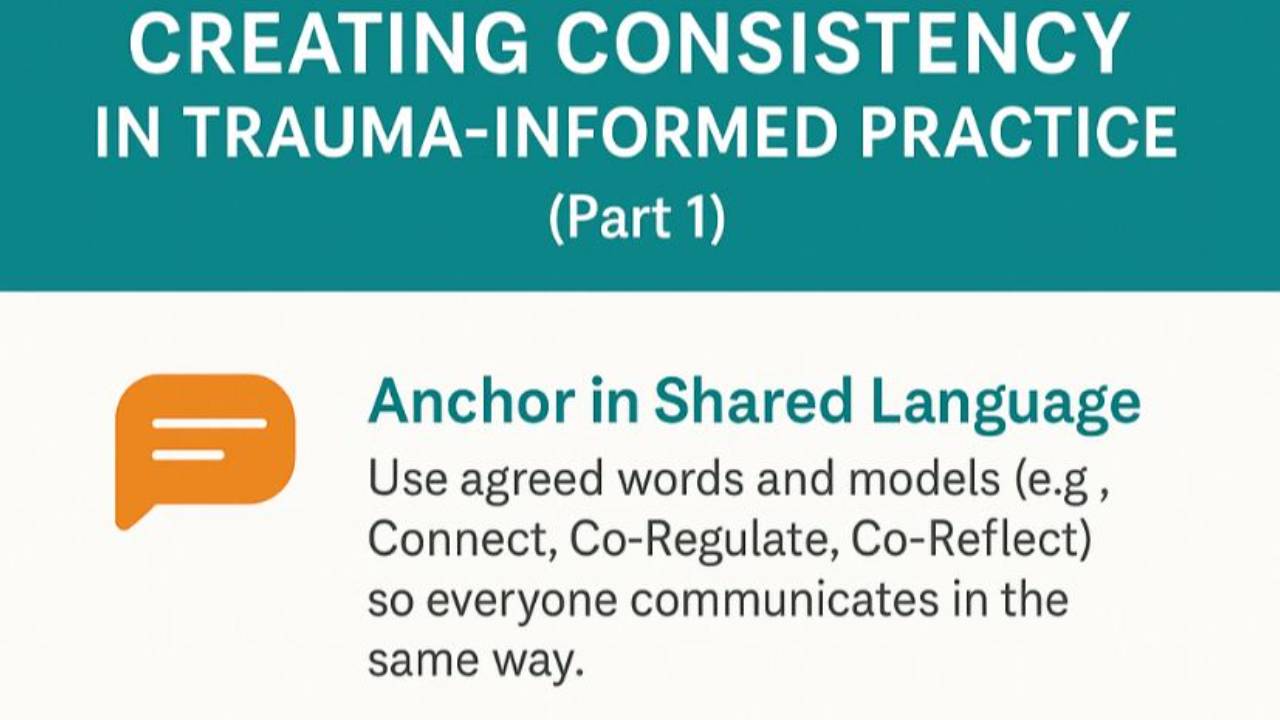Creating Consistency for Children in Care - Why It Matters More Than Anything Else
Nov 14, 2025
In residential care, consistency isn’t just a nice idea - it’s safety.
For young people who’ve experienced trauma, predictability is the foundation for trust.
And for teams, it’s the bridge between good intentions and healing impact.
But let’s be honest - consistency is also the biggest challenge in residential homes.
Different shifts, changing staff, and the emotional intensity of the work can all make it hard to respond in the same way every time. Yet, that’s exactly what our young people need most - adults they can rely on, no matter who’s on duty or what the day brings.
When we talk about being trauma-informed, we often focus on practice and what we do: connecting, co-regulating, reflecting.
But the real transformation - the thing that turns care settings into places of safety and recovery - lies in how consistent we are in living those values every day.
Why consistency matters
Many of the young people we support have lived through unpredictable environments. Adults have changed, rules have shifted, and safety hasn’t always been guaranteed.
When staff respond differently to the same behaviour, it can feel confusing and unsafe.
One adult says, “let’s take a break,” another gives a consequence, and another ignores it completely.
For the young person, that inconsistency can reignite feelings of chaos or rejection - even when every adult means well.
Consistency in trauma-informed practice doesn’t mean everyone acts the same.
It means everyone thinks the same way about safety, relationships, and recovery- grounded in shared values and language.
From training to team culture
It’s easy to leave training feeling inspired and motivated - but a few weeks later, the pressure of daily routines can make it hard to sustain.
Embedding a trauma-informed culture requires more than knowledge. It takes shared understanding, clear expectations, and reflective spaces to keep learning together - a constant drip drip drip…….
Creating consistency needs:
- A common language - so everyone uses the same words and models (like Connect, Co-Regulate, Co-Reflect).
- Aligned leadership - when managers model curiosity and calm, everyone follows.
- Reflective opportunities - to learn and support each other, not to judge.
This is how a trauma-informed culture takes root.
It isn’t built in a training day; it’s built in everyday moments - through supervision, debriefs, and the way we talk about young people when they’re not in the room.
Practical ways to strengthen consistency
The role of leadership
Leaders set the emotional tone.
When managers respond to staff distress with empathy, model curiosity instead of control, and prioritise reflective spaces over criticism - they shape the very culture we want for our young people.
A consistent trauma-informed culture begins with adults feeling safe, seen, and supported.
Because we can’t ask staff to offer calm when they don’t feel it themselves.
From intention to impact
“Consistency is what turns trauma-informed knowledge and practice into culture.” Dr Leanne Johnson
It’s what helps young people believe that safe adults really do exist - because every adult, every time, shows up in the same predictable, compassionate way.
Remember these top tips:
1. Anchor in Shared Language
2. Start Small - Do It Often
3. Micro-Moments of Reflection
4. Role Modelling Matters
5. Consistency through Rituals
6. Celebrate and Name It
7. Buddy Up
8. Practice Not Perfection
Head over to LinkedIn to connect with me and find more like this and access the posters. Click here.
